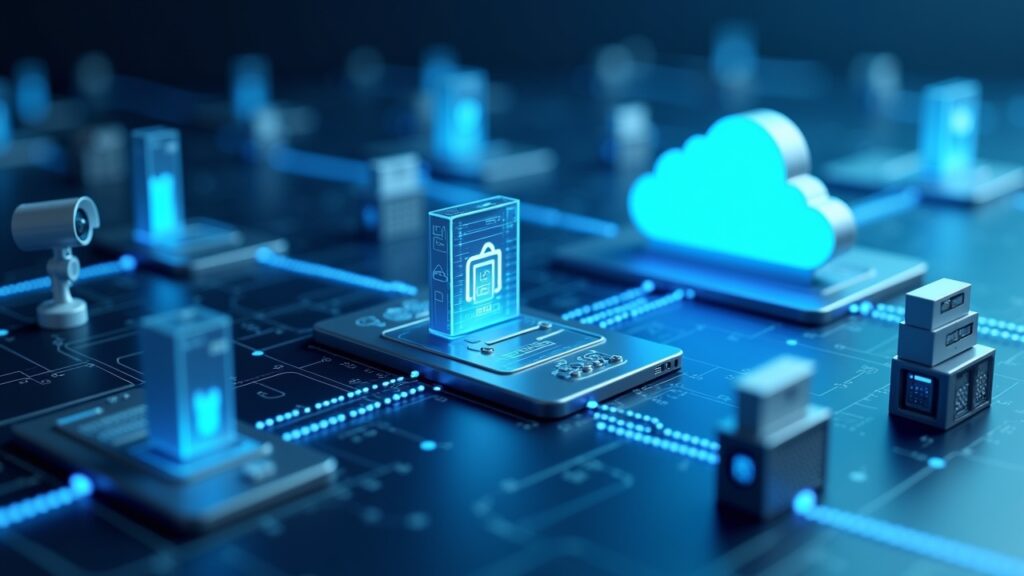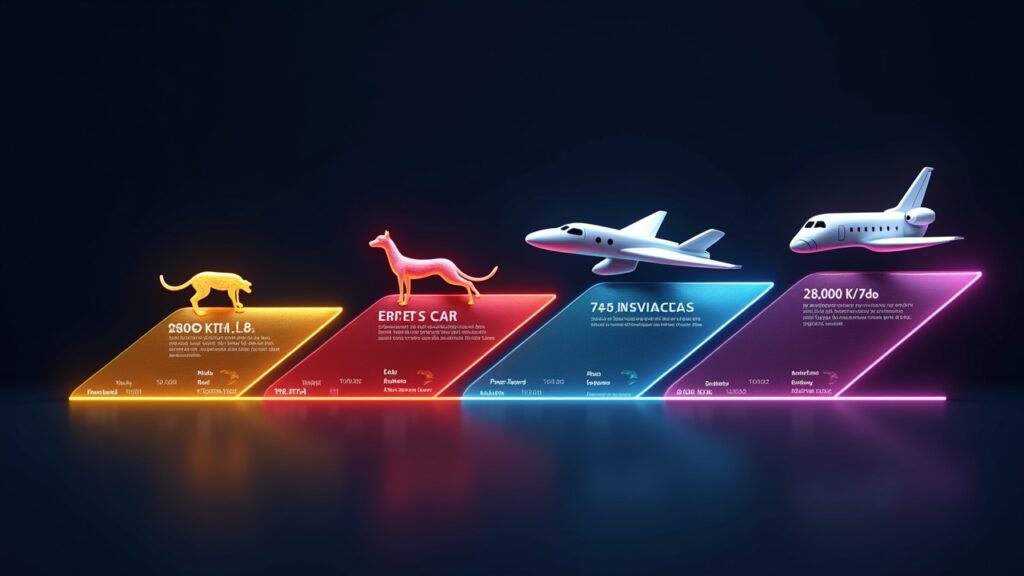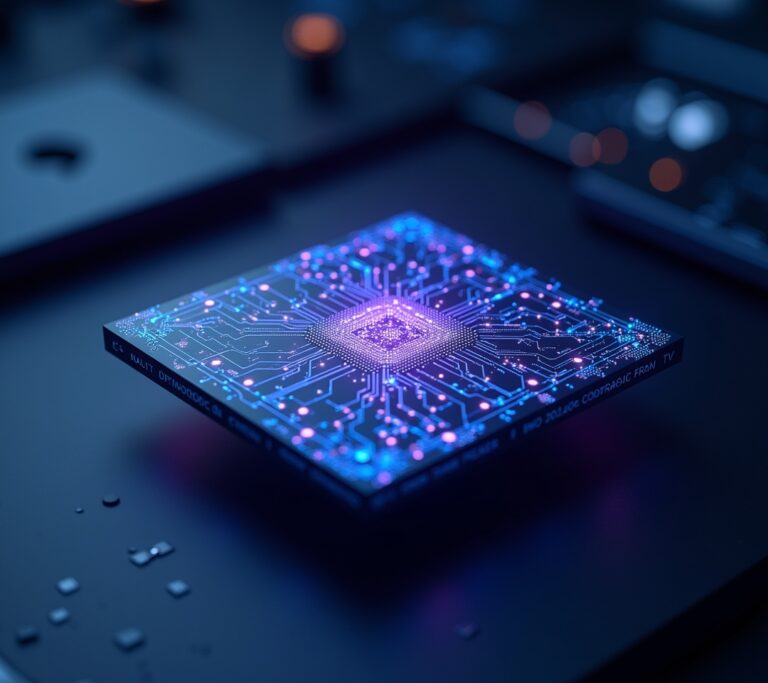Advertisements
Remember when we thought having a computer in every home was revolutionary? Well, buckle up! According to Gartner, cloud computing spending hit $597 billion in 2023, while edge AI is growing at a mind-blowing 15.1% annually. I’ve spent the last five years knee-deep in both technologies, and let me tell you – choosing between them ain’t always straightforward!
When I first stumbled into this field, I thought cloud computing was the answer to everything. Boy, was I wrong. After burning through my client’s budget on unnecessary cloud resources (yeah, that was a fun conversation), I learned that edge AI and cloud computing each have their sweet spots.
Today, I’m gonna walk you through what I’ve learned the hard way about these two game-changing technologies. Trust me, understanding the difference could save you thousands of dollars and countless headaches.
What’s Edge AI Anyway? (And Why Should You Care)

Edge AI is basically artificial intelligence that runs right on your device – no internet needed. Think of it like having a mini-Einstein in your smartphone or security camera. The processing happens locally, on the “edge” of the network.
I remember installing my first edge AI security system at home. The thing could identify my cat versus an actual intruder without sending any data to the cloud! My wife was impressed (finally), and our internet bill thanked us too.
Here’s what makes edge AI special:
- Lightning-fast response times (we’re talking milliseconds)
- Works offline – perfect for remote locations
- Your data stays put, which is great for privacy
- Lower bandwidth costs since you’re not constantly uploading
The downside? These devices can be pricier upfront, and updating the AI models can be a pain. I once had to manually update 50 edge devices at a factory – took me two full days!
Cloud Computing: The Heavy Lifter in the Sky
Cloud computing is like having a supercomputer you can rent by the hour. Your data travels to massive data centers where powerful servers do all the heavy lifting. Companies like Amazon Web Services and Google Cloud have made this incredibly accessible.
My first cloud project was analyzing customer data for a retail chain. We processed five years of sales data in just three hours! Try doing that on your laptop – mine would’ve caught fire.
The cloud really shines when you need:
- Massive computing power for complex tasks
- Easy collaboration across teams
- Automatic updates and maintenance
- Scalability – need more power? Just click a button
But here’s the catch – you need reliable internet. I learned this the hard way when our connection dropped during a critical real-time analysis. The client wasn’t happy, and neither was my boss.
Real-World Face-Offs: When to Use What
Let me share some scenarios where I’ve seen each technology win big.
Edge AI Victories
Autonomous vehicles are edge AI’s poster child. You can’t have a self-driving car waiting for cloud responses when it needs to brake! I consulted for a startup developing delivery robots, and edge AI was non-negotiable.
Smart factories also love edge AI. One manufacturing client reduced defects by 40% using edge-based quality control. The cameras caught issues instantly, stopping the production line before waste piled up.
Cloud Computing Dominance
Big data analytics? Cloud all the way. I helped a healthcare company analyze millions of patient records to identify treatment patterns. Our edge devices would’ve taken months – the cloud did it in days.
Machine learning model training is another cloud winner. When you’re teaching an AI to recognize images from millions of examples, you need that cloud muscle. Edge devices just can’t handle it.
The Cost Conundrum (Or: How I Learned to Love Spreadsheets)

Here’s where things get tricky. Edge AI has higher upfront costs but lower ongoing expenses. Cloud computing? Low entry cost but those monthly bills add up fast!
I made a costly mistake early on – put everything in the cloud without doing the math. One client’s bill jumped from $500 to $5,000 monthly because their IoT sensors were constantly streaming data. Whoops! We switched to edge processing for routine stuff and only sent important data to the cloud. Problem solved.
My rule of thumb: Calculate your data volume and processing needs for at least 12 months. If you’re processing tons of data regularly, edge might save you money long-term.
Making the Smart Choice for Your Needs
After years of working with both technologies, here’s my advice: you probably need both. Yeah, I know – not the simple answer you wanted!
Start by asking yourself:
- How fast do I need responses? (Milliseconds = edge)
- How sensitive is my data? (Super private = edge)
- How complex are my computations? (Heavy duty = cloud)
- What’s my internet situation? (Spotty = edge)
Most successful projects I’ve seen use a hybrid approach. Edge handles the immediate stuff, cloud tackles the heavy analysis. It’s like having both a pocket knife and a power tool – different jobs need different solutions.
The technology landscape keeps evolving faster than my teenager’s music taste. But understanding these fundamentals will help you make smart choices, whether you’re building a smart home or revolutionizing your industry. Want to dive deeper into emerging tech trends? Check out more insights at Tech Digest – we’re always exploring what’s next in the digital world!




[…] to dive deeper into the world of technology and AI? Check out more insightful articles at Tech Digest where we break down complex tech topics into digestible, real-world […]